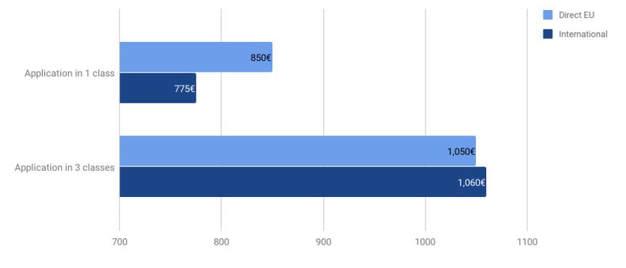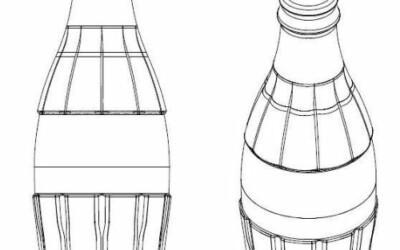Who can apply
Anybody natural or legal person (i.e. any individual or company) can apply for direct EU trademark. On the other hand, the use of international registration requires that the company using it is domiciled (or has real and effective commercial establishment) in Madrid Protocol country. This means that companies for example from Canada, Hong Kong or Brazil cannot use the international registration. In addition, in order to be able to use international registration, the company must first have an application or registration for the corresponding trademark.
Cost (government fees)
The government fees are very similar in each case. Below is a comparison of government fees.

The above fees cover only EUIPO’s fees for both direct applications and international applications. It should also be taken into consideration that when making an application for international registration, there are other mandatory office fees involved, such as World Intellectual Property Organization fee (minimum of about 565 EUR).
Languages
When making a direct EU trademark application, the applicant has to choose two langauges. The first language can be any of the official EU languages (currently 24). The second language must be either English, Spanish, French, Italian or German. For international registrations the applicant must choose the first language from English, French or Spanish, and the second from English, French, Spanish, German or Italian. Because the applicant must choose both languages from offical EUIPO languages, it is possible to have proceedings (such as oppositions) against the trademark in either one of those languages.
With direct applications it is possible to choose the languages so that all proceedings, such as possible oppositions, are conducted only in English. This is done by choosing the first language from languages other than English, German, Spanish, Italian or French (for example, choosing Finnish), and then choosing English as the second language.
Classification of goods and services
The issue with classification is that for international applications the applicant is limited to those goods and services that it has in its “home” application or registration. For example, if a company has a US registration that is used as basis for the international registration, the international registration cannot cover broader scope of goods and services that the US registration. With direct EU application the applicant can freely choose any goods and services.
Examination time
Direct EU applications are examined in a couple of months. However, it is also possible to have applications examined in about a week, using the so called “fast track” procedure. For international trademarks, EUIPO has informs the applicant (via World Intellectual Property Organization, WIPO) within six months of any possible defects in the application. In addition, the applicant’s home office (e.g. USPTO) and WIPO also take their time in handling the application, so it is evident that the direct application is much faster.
Dependence
On of the biggest drawbacks with international registrations are that they are “dependent” for five years on the validity of the home application/registration on which the international trademark is based. If the base registration is cancelled within five years from the date of international registration, the international registration will also be automatically cancelled. A direct EU trademark is not dependent on the validity of another trademark.
To start your own EU trademark application, click the button below



